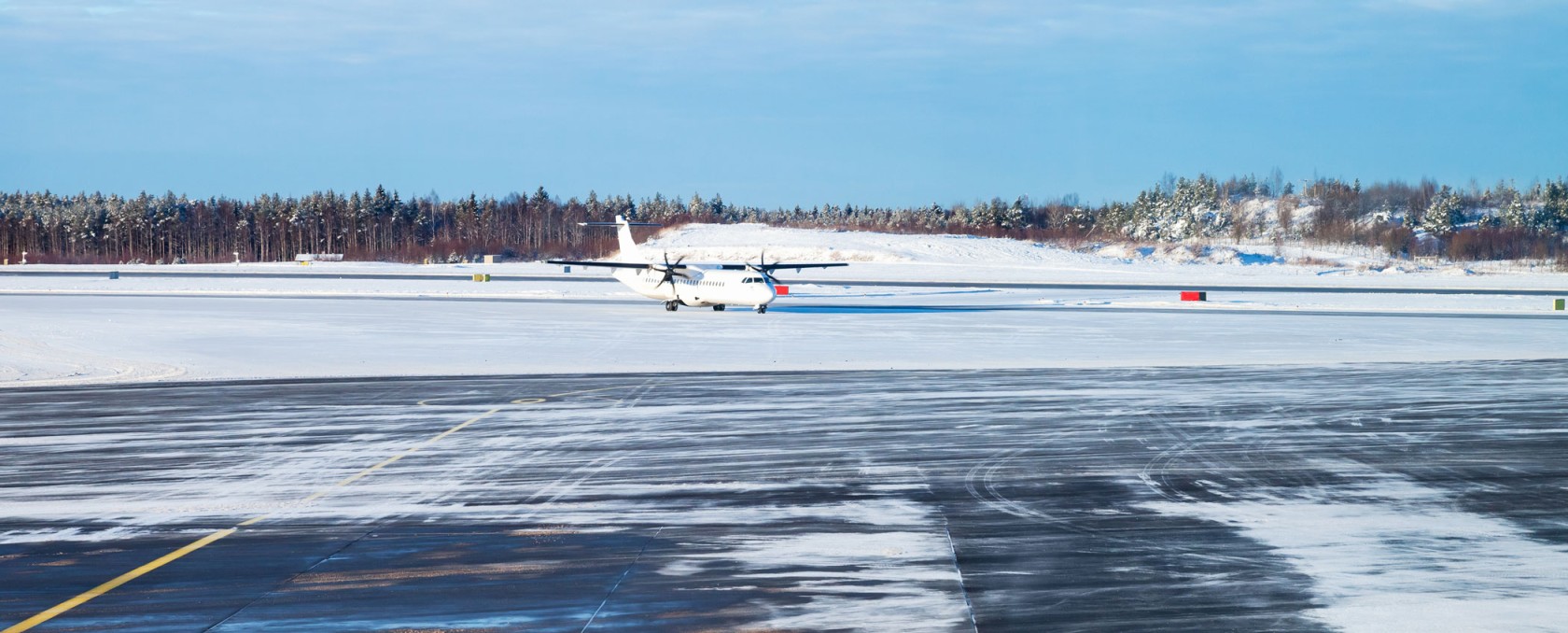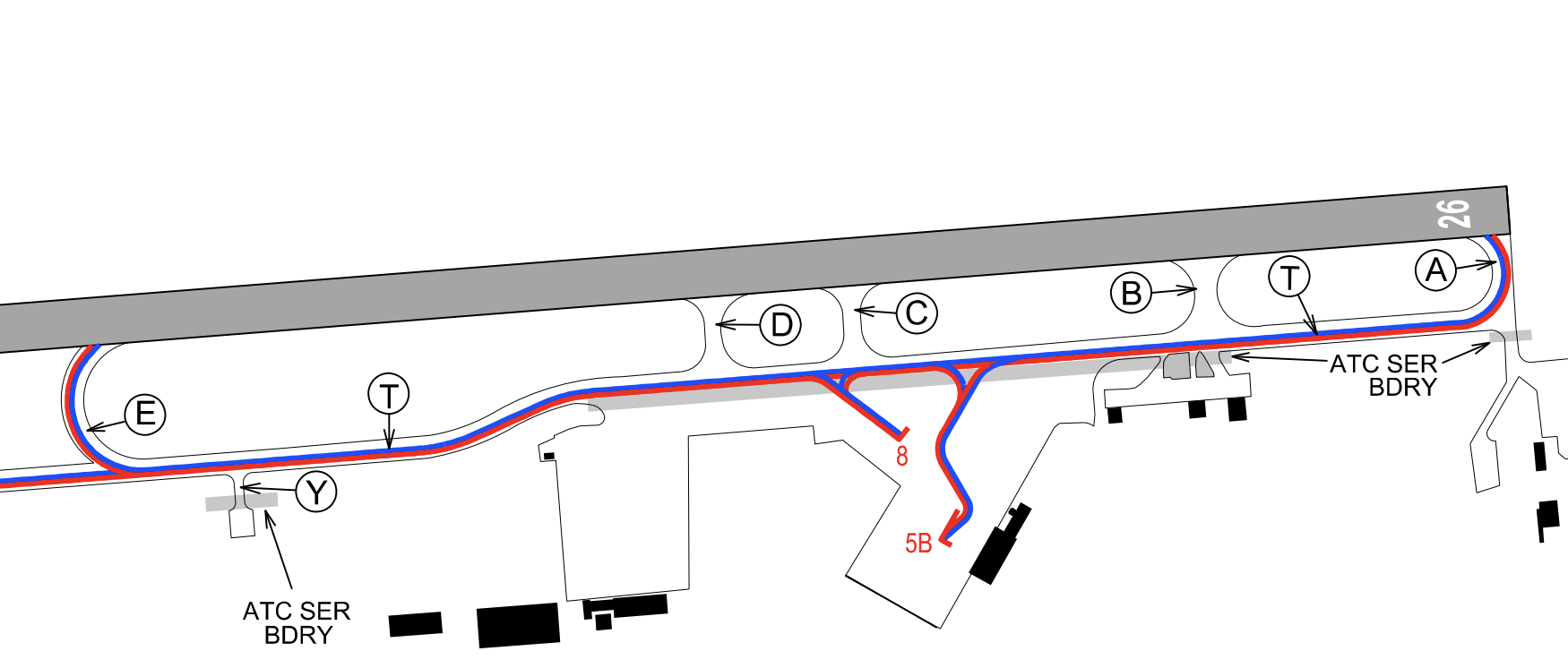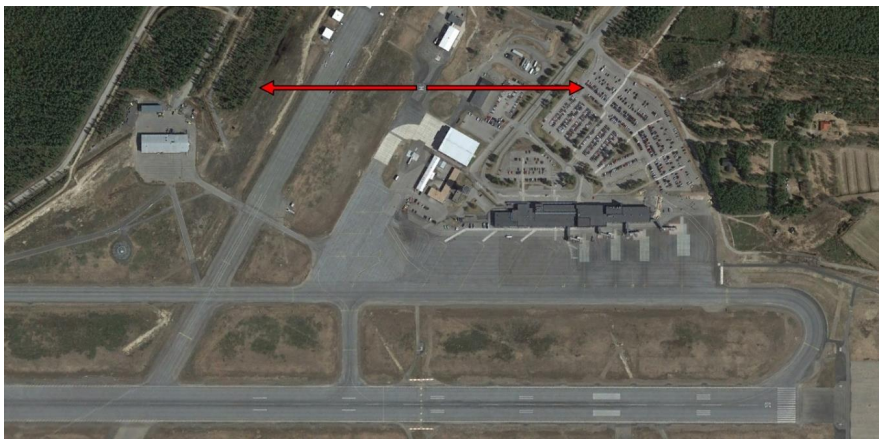🔵 EFTU - Turku
Turku Airport is the fourth busiest airport in Finland according to passenger numbers, located approximately 8 kilometers north of Turku city center. The airport is an integral part of the Scandinavian and Baltic aviation network and serves as an important hub for both commercial and private flights. Turku airport is highly accessible and strategically positioned.
One should note that Turku Airport is open 24 hours a day and offers ATC services during its operational hours. It is surrounded by flat terrain, and pilots should be aware of the weather conditions, especially during the winter months when heavy snow can be expected.
| IATA | ICAO | Charts |
|---|---|---|
| TKU | EFTU | Finland AIP - EFTU |
ATC positions
Turku is a controlled airport with aerodrome control- and approach control service. This service can be combined (tower-radar), or separate.
| Logon code | Call sign | Frequency | Responsibilities |
|---|---|---|---|
| EFTU_TWR | TURKU TOWER | 118.300 | Ground movement, Turku Control Zone |
| EFTU_R_TWR | TURKU TOWER | 118.300 | Ground movement, Turku Control Zone & Terminal Area |
| EFTU_APP | TURKU RADAR | 120.475 | Turku Terminal Area |
Ground layout
- The main apron serving passenger airlines is located next to the Control Tower
- Cargo flights are usually parked on the cargo apron next to taxiway D
- General aviation aircraft are parked on the Apron next to taxiway Y or B
- Medical helicopter base is located next to taxiway B south of the main taxiway
Frontier Guard apron is located next to taxiway A. There is also one hangar for Air Force QRA missions.
Runways
Turku is equipped with one runway 08/26. The preferred runway is considered to be runway 08.
Currently available stands
Stand restrictions
- Stands 5B and 8 can accomodate Code E and F aeroplanes (see table below)
- Stands 4, 5, 6 and 7 can accomodate Jet aircraft up to A321 / B739
- Cargo aircraft are parked on stands 9, 10, 12 and 12
When stand 5B is occupied, stands 5, 6 and 7 shall not be in use. Stand 5B is only used for Code E or F aeroplanes.
| Code | ICAO | Aircraft type | Wingspan M |
|---|---|---|---|
| 🔴 F | A388 | Airbus A380-800 | 79.8 |
| 🔴 F | A124 | Antonov AN-124-100 | 73.3 |
| 🔴 F | B748 | Boeing 747-8 | 68.5 |
| 🔴 F | C5M | Lockheed C-5 Super Galaxy | 67.9 |
| 🔵 E | B77W, B77L | Boeing 777-300ER, -200LR, -F | 64.8 |
| 🔵 E | A359, A35K | Airbus A350-900, A350-1000 | 64.75 |
| 🔵 E | B744 | Boeing 747-400 | 64.44 |
| 🔵 E | A345, A346 | Airbus A340-500, -600 | 63.45 |
| 🔵 E | B772, B773 | Boeing 777-300, -200 | 60.93 |
| 🔵 E | A332, A333, A342, A343 | Airbus A330-200, -300, Airbus A340-200, -300 | 60.3 |
| 🔵 E | B788, B789, B78X | Boeing Dreamliner 787-8, 787-9, 787-10 | 60.12 |
| 🔵 E | IL96 | Iljushin IL-96 | 60.11 |
| 🔵 E | B742, B743 | Boeing 747-200, -300 | 59.6 |
En-route clearance
Please, do not include the SID in your flight plan route.
By default the local tower controller will give clearance to requested cruise flight level.
Departure with SID:
| 🎧 | Fastair 312, cleared to Helsinki, runway Fastair 312, selvä Helsinkiin, kiitotie |
Departure with direct route:
| 🎧 | Fastair 312, cleared to Helsinki, runway 12, direct Fastair 312, selvä Helsinkiin, kiitotie 12, |
Approach
Please, do not include the STAR in your flight plan route.
Runway 12 is the only runway with an ILS approach system. This makes runway 12 the preferred runway during Low Visibility Operations.
When approaching runway 30, pilots may expect to be cleared for RNP approach.
Arriving aircraft may be cleared for the approach already on initial contact with the local controller. Please be ready to copy any clearance and instructions.
Phraseology example:
- On initial contact with approach control, please include the following:
- Call sign
- Current flight level
- Assigned flight level
- Aircraft type (and wake turbulence category if necessary)
- Received ATIS broadcast
- Other restrictions given by previous controller
| 👨✈️ | Oulu tower, Finnair 4MW, passing flight level 202 for flight level 100, Airbus 320, information Q Oulun torni, Finnair 4MW, läpäisen lentopinnan 202 lentopinnalle 100, Airbus 320, tiedotus Q |
| 🎧 | Finnair 4MW, Oulu tower, radar contact, continue descent to 2300 feet, QNH 1032, cleared ILS Z approach runway 12, right circuit, report established on localizer, for information next 20 miles below flight level 95 uncontrolled airspace Finnair 4MW, Oulun torni, tutkayhteys, jatka laskeutumista 2300 jalkaan, QNH 1032, selvä ILS Z lähestymiseen kiitotie 12, oikea kierros, ilmoita suuntasäteessä, tiedoksi seuraavat 20 mailia alle lentopinnan 95 valvomatonta ilmatilaa |
| 👨✈️ | Continue descent to 2300 feet, QNH 1032, cleared ILS Z approach runway 12, right circuit, wilco, Finnair 4MW Jatkan laskeutumista 2300 jalkaan, QNH 1032, selvä ILS Z lähestymiseen kiitotie 12, oikea kierros, ilmoitan, Finnair 4MW |
Medical helicopter
General information
| ICAO call sign | FIH 50 |
| SSR code | 0005 |
| Agreed route | DCT, MAX 1300 FT |
| base flight rules | VFR (IFR visual take-off and landing approved) |
Medical helicopter pilot shall select transponder code 0005 prior to contacting Oulu Tower.
Departure from base
- VTOL PC1 take-off from FATO
- Initial climb in runway direction H110 or H290 (picture)
ATC will give VFR clearance (normally direct en-route, 1300 feet or below) and ask pilot to report when airborne. No take-off clearance is given when departing directly from apron.
Arrival to base
- Final approach in runway direction H110 or H290
- Aimpoint FIH FATO
- VTOL PC1 landing
ATC will normally give a clearance for approach to own base and ask the pilot to report on ground. No landing clearance is given when arriving directly to apron.




